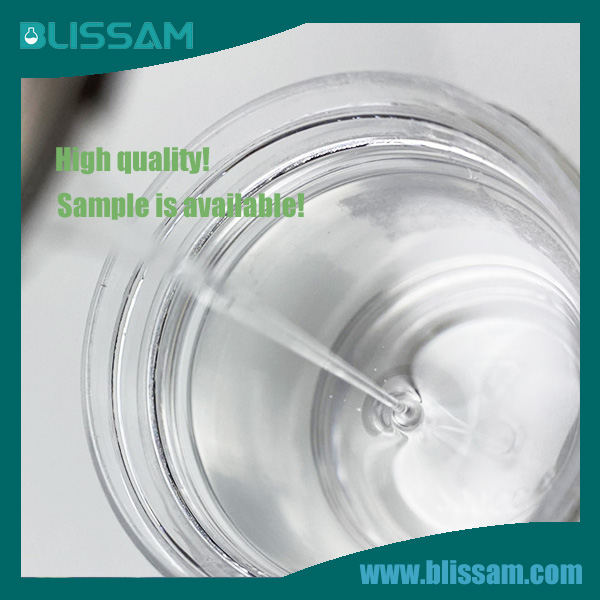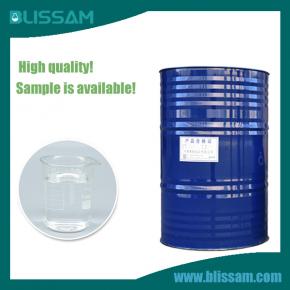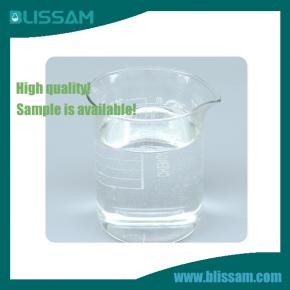Silicone materials have become indispensable in various industries due to their versatility, durability, and unique properties. Two of the most widely used silicone-based products are silicone fluids and silicone release coatings. Both have essential roles in manufacturing, packaging, and product development, but understanding the differences between them is key to ensuring optimal performance in specific applications.
In this article, we will explore the characteristics, applications, and best practices for silicone fluids and silicone release coatings. BLISSAM, a leading manufacturer of silicone products in China, shares insights into the strengths of each material, offering guidance on choosing the right product for your needs and ensuring proper application techniques.
Silicone fluids, also known as silicone oils, are clear, odorless, and highly stable fluids with a wide range of viscosities. Their unique molecular structure, composed of silicon-oxygen bonds, gives them remarkable thermal stability, chemical inertness, and lubricating properties. These characteristics make silicone fluids a versatile choice in various industries, including cosmetics, automotive, electronics, and textiles.
Thermal Stability: Silicone fluids can withstand extreme temperatures, both high and low, without significant degradation. This makes them ideal for use in environments that experience drastic temperature changes, such as automotive and industrial applications.
Chemical Inertness: Silicone fluids do not react with most chemicals, ensuring long-term stability and reducing the risk of corrosion or degradation in harsh environments.
Lubrication and Anti-Friction Properties: Due to their smooth, low-friction surface, silicone fluids are used as lubricants in mechanical systems, helping to reduce wear and tear on moving parts.
Cost Performance: Silicone fluids offer excellent cost performance, providing long-lasting efficiency and reduced maintenance costs. Their ability to perform reliably in harsh conditions reduces the need for frequent replacements, offering overall cost savings.

Lubrication: Silicone fluids are widely used as lubricants in machinery and automotive components where conventional oils may break down under extreme conditions.
Cosmetics and Personal Care: In the cosmetics industry, silicone fluids are used to give lotions, creams, and hair products a smooth texture, improving spreadability and providing a silky finish.
Electrical Insulation: Silicone fluids also serve as insulating materials in transformers and other electronic devices, ensuring the safe and efficient operation of electrical systems.
BLISSAM, a trusted supplier of silicone fluids, offers a wide range of viscosity options tailored to different industry needs. By providing customizable solutions through their OEM/ODM services, BLISSAM ensures that customers receive the right silicone fluid formulations for their specific applications.
Silicone release coatings are specialized formulations that create a non-stick surface, preventing materials like adhesives, glues, or resins from bonding to surfaces. These coatings are commonly applied to paper, films, and liners used in industries such as packaging, labels, and composites. Silicone release coatings provide an essential function by allowing materials to be easily peeled off without leaving residue or damaging the underlying surface.
Non-Stick Surface: Silicone release coatings provide excellent release properties, allowing adhesives and other sticky materials to be easily removed from the surface without tearing or leaving residue.
Wide Application Range: These coatings can be applied to a variety of substrates, including paper, plastic films, and fabrics, making them suitable for numerous industries.
Temperature Resistance: Similar to silicone fluids, release coatings can endure high and low temperatures, ensuring their performance in demanding environments such as composite molding and industrial laminating processes.
Customization: Silicone release coatings can be formulated to meet specific release force requirements, from easy release for applications like labels to tight release for more challenging materials like industrial tapes.
BLISSAM, with its extensive R&D capabilities, offers customized silicone release coatings through its OEM/ODM services, allowing manufacturers to achieve the precise release properties needed for their specific products.

Label and Tape Production: Silicone release coatings are essential in the production of self-adhesive labels and tapes. They ensure that the adhesive material can be easily peeled from the backing liner without losing its stickiness.
Composite Molding: In industries like aerospace and automotive, silicone release coatings are applied to molds and surfaces to prevent composite materials from sticking during the curing process. This results in a smooth finish and reduces the need for cleaning and maintenance.
Packaging: In food and industrial packaging, silicone release coatings are applied to papers and films to prevent products from sticking, ensuring easy handling and processing.
While both silicone fluids and silicone release coatings offer numerous benefits, their effectiveness depends on proper application techniques. Here are some best practices for ensuring optimal performance:
Select the Right Viscosity: Depending on the application, different viscosities of silicone fluids may be required. High-viscosity silicone fluids are often used in high-temperature environments, while low-viscosity fluids are better suited for light lubrication or cosmetic applications. BLISSAM offers a wide range of viscosity options tailored to specific industry requirements.
Apply Evenly: When using silicone fluids as lubricants or insulating materials, ensure an even application to avoid areas of friction or inconsistent insulation. Use appropriate dispensing equipment for smooth, uniform coverage.
Consider Environmental Conditions: For applications in extreme temperatures or chemically harsh environments, choose silicone fluids that are specially formulated to handle these conditions. BLISSAM can customize silicone fluid formulations to ensure compatibility with the specific operational environment.
Surface Preparation: Before applying silicone release coatings, ensure that the substrate is clean and free of any contaminants. Dust, grease, or residues can prevent the coating from adhering properly, reducing its effectiveness.
Apply Consistently: To achieve consistent release performance, it is crucial to apply the silicone release coating evenly across the surface. Automated coating systems can help maintain consistent thickness, ensuring uniform release properties.
Curing Time: Allow the silicone release coating to cure fully before exposing it to adhesives or other materials. This ensures that the coating forms a complete barrier, preventing sticking or residue.
Test for Release Force: Depending on the application, different levels of release force may be required. Conduct tests to ensure that the coating meets the desired release force, especially in applications like labeling or composite molding.

Silicone fluids and silicone release coatings each offer distinct benefits for various industrial applications. While silicone fluids excel in lubrication, insulation, and thermal stability, silicone release coatings provide unmatched non-stick surfaces essential for packaging, labeling, and manufacturing processes.
Choosing the right material for your needs involves understanding the specific requirements of your application. BLISSAM, as a leading manufacturer and distributor of silicone products, offers both high-quality silicone fluids and release coatings, along with expert guidance on their application. Through their R&D and OEM/ODM services, BLISSAM provides tailored solutions that ensure optimal performance, cost efficiency, and long-term durability across diverse industries.
Contact:
Phone: +86-15957191858
E-mail: info@blissam.com
Whatsapp:+8615957191858
Add: A647, No. 9, Xiyuan Road, Xihu District, Hangzhou, Zhejiang, China
We chat
